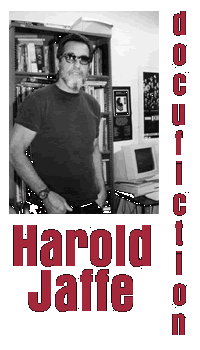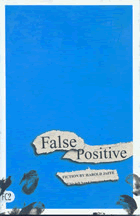
Slurry
|
|
Sonny Boy Nuñez, a medical riddle who inexplicably scratched himself to the point of self-mutilation and who was the center of an ambitious and briefly famous attempt to attain an independent life for a profoundly disabled individual, died Wednesday at a health care facility in the Bronx. He was 25 and was living in Washington Heights, within sight of Yankee Stadium. He was a lifelong Yankee fan and when he was six was visited in the children's ward by the great Mickey Mantle, who had a hangover but was nonetheless friendly to the children, if a bit distracted. The cause of Sonny Boy's death was infection of the blood and spine, his parents said. For reasons no one in the medical establishment professed to understand, Sonny Boy felt as if a million bugs crawled just under his skin. To quiet his torment, he scratched himself so insistently that he ripped open his skin, even though he was a New York Rican who fell within the range of average intelligence and was fully aware of the damage he was inflicting. I say "within the range of average intelligence," but how reliable are those standard IQ tests in any case? At the very least, they are weighted against the collective consciousness of colored people. Since the age of 5, Sonny Boy was marooned in institutions, including one "sanatarium" that gave him electric shocks as part of its behavioral therapy regime. Modalities once thought primitive, even barbaric, have made a comeback: notably electric shock and psychosurgery, which is really a millennial synonym for lobotomy. As he grew older, Sonny Boy desperately longed for a commonplace life like everyone else's. As he once put it: "I want to have my own pad where I can turn my Santana disks up as loud as I want and have friends over." In 1994, a small South Bronx social service agency, Job's Path, began a tortuous effort to answer his wishes and thereby to test the possibilities for the most shunned of the developmentally disabled. In November 1996, the agency, Christian in spirit if not in letter, managed to move him into his own studio apartment in Washington Heights, the second floor of a pre-World War 2 building on 155th Street, just west of Amsterdam Avenue. The efforts to gain his release and his first year of independent living were chronicled in a Fox TV special called "Sonny Boy's Blues," which, however, drew lower ratings than anticipated, probably because it was foolishly paired against Monday Night Football on ABC, which just happened to be featuring the Dallas Cowboys and Oakland Raiders. Nonetheless, the Fox TV special thrust Sonny Boy into the limelight and generated a wide, if brief, interest in his case. Sonny Boy was a diminutive young man, alternately sardonic and endearing, heavily scarred from his assaults on himself. He was born in the South Bronx on Valentine's Day in 1973. His parents, Dolly and Oscar Nuñez, found themselves depleted in their struggle to care for him. Oscar worked as a chef's aide in a Cuban/Chinese restaurant in Chelsea, while Dolly was a clerk in a dry cleaning shop on Columbus Avenue. Sonny Boy had an extraordinarily high tolerance for pain and would break his bones and rip off his toenails as well as scratch himself virtually to a bleeding pulp. On the Fox special he was displayed furiously scratching, then banging his head against a stone wall in Morningside Park, which is south of Washington Heights. He sustained a serious concussion. That is, the stunt man standing in for the young Italian actor who represented Sonny Boy sustained a serious concussion on the Fox special. Exhausted as much as heartbroken, Sonny Boy's parents reluctantly placed him in an institution, always hopeful that one day he would get out. Finally he did, after 14 years of internment. The current mayor of New York elected to do what other cities had successfully done, namely release variously disabled patients into the street and transform the institutions and halfway houses into cash-crop residences. Sonny Boy was one of several thousand released by the mayor's directive. Once on his own, Sonny Boy experienced sharp mood swings, but he also made pronounced progress. The first year in his Washington Heights apartment, he got a part-time job at a video store and took driving lessons. He gained enough control of his impulse to scratch that he went to movies and stores and baseball games unaccompanied by any of the three aides assigned to him. He was on medication, of course. One of the three aides, Sonny Boy's favorite, was a 30-year-old Filipino martial arts expert named Cato, who was also a medical technician, Web site designer, and sometime bouncer. Though Sonny Boy didn't scratch as violently as before, he still continued to scratch. In December 1997, a leg infection brought on by his scratching sent him to a hospital and nearly killed him. But then he made a remarkable recovery and returned to independent life. He even entered a shuffleboard tournament in East Harlem. However, the infection persisted. It invaded his bones and spine. When he was hospitalized in February, his legs became paralyzed. At the end of July, in need of full-time nursing care, he was moved into the Terence Cardinal Cooke Health Care Center in the northeast Bronx, which is where he died. Interestingly, he died five months before the date the Fox TV special dramatized him dying; one of the two dates had to be wrong. His last word, purportedly, was "grace." This was disputed by Fox who claimed it was "mace," a commentary on local police strong-arm methods with which he was allegedly in agreement, an obedient citizen, despite his color, social status, emotional fragility, and fatal scratching, according to Fox. Cato cried at being separated from him. Sonny Boy is survived by his parents and his younger brother, Benny. The family is being consoled by a grief counselor. Rocks
Alone and barefoot, a man reportedly pelted officers with baseball-sized rocks he carried in a pouch by his belt. Until he was fatally shot by a Border Patrol agent, ending the two-hour confrontation yesterday near the California-Mexico border. A Border Patrol agent and a caretaker for the Sweetwater Authority were treated at local hospitals after being struck by rocks in the chest and back. Sheriff's homicide Sgt. Byron Sprague said the incident began at 6:45 a.m. yesterday near Loveland Reservoir on Japatul Road, southeast of Alpine, as caretaker Mike Muntz was opening the reservoir for fishermen, who pay a yearly fee to underwrite the cost of stocking the reservoir with game fish. Muntz noticed something that looked like a metal box on the ground and went to investigate. Suddenly he began getting hit by rocks, said Danny Bostig, deputy operations manager for the authority, which provides much-needed water for National City, Chula Vista, and Bonita. Muntz radioed for help, but not before being struck in the small of the back with a rock. Within minutes a Border Patrol agent drove up and his camo-green Ford Expedition was barraged by rocks, one of which shattered a rear window, according to Sgt. Sprague. Backup force was summoned. The suspect fled west along Japatul Road, Sgt. Sprague said, alternately walking and running--picking up more rocks along the way--before veering south onto a dirt path toward the reservoir. Three Sheriff's deputies, a San Diego Police Department dog team, and a half-dozen Border Patrol agents arrived to aid in the search. The officers were fit and muscular. An estimated 67 percent of them ingest steroids to build muscle mass. These steroids are (as of this writing) 100 percent legal; the same brand, purportedly, that Mark McGuire and Sammy Sosa use. At first, officers scoured the brush nearest the road, but after a few minutes they found tracks indicating the man was fleeing south into the foothills of the Chocolate Mountains. The muscular Border Patrol agents, trained to distinguish various kinds of shoe prints, had little trouble following the marks left by the shoeless man with his pouch full of rocks, said Border Patrol spokesperson Maria Villareal-Schmidt. However, the police dogs were of little use. "It's very dense, thick brush," Villareal-Schmidt explained. "The dogs weren't able to negotiate the brush and follow the tracks." Four Border Patrol trackers finally caught up with the suspect after about an hour's search. "Throughout the pursuit, the tracking agents were shouting commands to freeze, to stop throwing rocks, identifying themselves in English and in Spanish," Sgt. Sprague said. "Nowhere in this encounter did the suspect respond verbally whatsoever to them," Sgt. Sprague said. Instead the suspect continued to reach into his pouch and throw rocks. "Some of the agents were struck by the rocks," Sgt. Sprague said. At one point, while throwing rocks, the suspect "began advancing toward the tracking agents in a menacing fashion," according to the Sheriff's department. "One of the agents was struck in the chest by one of the larger rocks," Sgt. Sprague said. Even though the agent wore a bulletproof vest, the rock "stung," according to Sgt. Sprague. All Border Patrol agents are issued bulletproof "Kevlar" vests. In response the agent shot the suspect with his Austrian-made Glock 9mm seventeen times. He emptied his clip, which holds seventeen rounds. This was routine procedure, spokesperson Villareal-Schmidt explained. Agents began administering first aid to the suspect on the spot. They summoned paramedics. The paramedics reached the man in time to begin treating him. "The suspect died at the scene," Sgt. Byron Sprague said. The dead suspect was identified only as "a 6-foot Hispanic." Which is larger than Hispanics tend to grow. Except that Mexicans living adjacent to the US are subject to US nutritional practices and legal steroid supplements, hence grow larger and more muscular than their compatriots who live in the interior. There was speculation that the suspect might have been a drug smuggler or a migrant smuggler or an illegal immigrant. Nothing about his identity or background could be confirmed as of yesterday. Although the Sheriff's Department was in charge of the scene after the shooting, the actual investigation will be conducted by the FBI, which will forward its report to the US attorney in San Diego. The US Attorney's Office, rather than the county District Attorney, will determine whether the shooting was justified, Sgt. Sprague explained. With a small army of very fit county and federal law enforcement officers, backed by a Border Patrol helicopter, trying to piece together what happened, Sgt. Byron Sprague did not try to hide his bewilderment. "It just doesn't make any sense to me," he said, referring to the dead, rock-throwing suspect. "I've seen a lot of strange stuff in my eleven-and-a-half years down here by the border, "But what he did did not seem to be reasonable behavior." Germs
Anyone who wants to strike a city by spraying anthrax from a plane would need a crop duster with custom-built nozzles that could accommodate germ particles between 1 and 5 microns in size. Particles smaller than that would not have enough mass to float in the air properly. Larger particles would not be properly absorbed into the lungs. To generate high casualties, the anthrax would have to be turned into freeze-dried anthrax, which can yield potencies of 100%. Except that freeze-drying requires complicated, costly equipment that can handle the spores in airtight containers. Only government-sponsored bio-weapon programs, such as Iraq's or North Korea's, are likely to have such equipment. Anthrax is simplerto handle in a wet form called slurry. But the potency of this wet material is typically 10% to 15%. Employing slurry, a low-tech terrorist could efficiently assault an institutional headquarters with a hand-held sprayer. |
|
Return to the top of the page.
Copyright © 2001-2013 by Harold Jaffe. All rights reserved.
|
 from False Positive
from False Positive